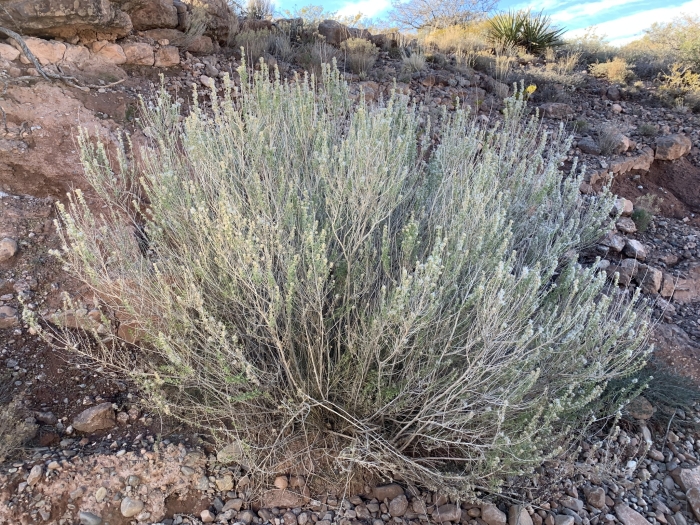Winterfat
(Krascheninnikovia lanata)
Winterfat (Krascheninnikovia lanata)
/
/

© CK Kelly
CC BY 4.0
Image By:
© CK Kelly
Recorded By:
Copyright:
CC BY 4.0
Copyright Notice:
Photo by: © CK Kelly | License Type: CC BY 4.0 | License URL: http://creativecommons.org/licenses/by/4.0/ | Uploader: ck2az | Publisher: iNaturalist |

















































Estimated Native Range
Summary
Krascheninnikovia lanata, commonly known as winterfat, is a perennial shrub in the Amaranthaceae family. It is native to arid and semi-arid regions, including sagebrush steppe, desert shrublands, and pinyon-juniper woodlands across western North America, from central Western Canada through the Western United States to northern Mexico. This plant typically grows to heights between 0.5–1 meter (1.6–3.3 ft) and is characterized by its erect stem branches and light gray foliage. The tops of the branches feature plentiful spike inflorescences that bloom from March to June, with flowers that are not particularly showy but are valuable for native pollinators.
Winterfat is valued for its drought tolerance and is used in xeriscaping, wildlife gardens, and native plant landscapes. Its distinctive light gray foliage provides year-round interest, and the plant is known for its longevity. It thrives in full sun and requires minimal water once established, preferring well-drained soils. Winterfat’s ability to provide forage for wildlife, particularly in winter when other food sources are scarce, makes it a beneficial addition to restoration projects and naturalized areas. It is also used for erosion control due to its extensive root system. While generally disease-resistant, it can be susceptible to root rot in poorly drained soils.CC BY-SA 4.0
Winterfat is valued for its drought tolerance and is used in xeriscaping, wildlife gardens, and native plant landscapes. Its distinctive light gray foliage provides year-round interest, and the plant is known for its longevity. It thrives in full sun and requires minimal water once established, preferring well-drained soils. Winterfat’s ability to provide forage for wildlife, particularly in winter when other food sources are scarce, makes it a beneficial addition to restoration projects and naturalized areas. It is also used for erosion control due to its extensive root system. While generally disease-resistant, it can be susceptible to root rot in poorly drained soils.CC BY-SA 4.0
Plant Description
- Plant Type: Shrub, Subshrub
- Height: 1-3 feet
- Width: 1-2 feet
- Growth Rate: Moderate
- Flower Color: White
- Flowering Season: Summer
- Leaf Retention: Evergreen
Growth Requirements
- Sun: Full Sun
- Water: Low
- Drainage: Fast
Common Uses
Drought Tolerant, Erosion Control, Low Maintenance
Natural Habitat
Native to arid and semi-arid regions, including sagebrush steppe, desert shrublands, and pinyon-juniper woodlands
Other Names
Common Names:
Scientific Names: , Krascheninnikovia lanata, Ceratoides lanata, Eurotia lanata, Krascheninnikovia ceratoides subsp. lanata, Eurotia subspinosa, Eurotia lanata var. subspinosa, Krascheninnikovia lanata var. subspinosa, Ceratoides lanata var. ruinina, Ceratoides lanata var. subspinosa
GBIF Accepted Name: Krascheninnikovia ceratoides subsp. lanata (Pursh) Heklau